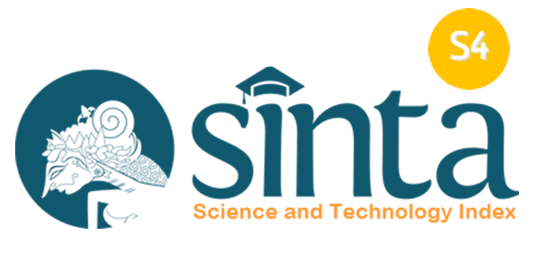Assessing Language Ability of Adolescent Students with Autism Spectrum Disorders
Abstract
The main characteristics of autism spectrum disorder (ASD) lay on the ability to communicate and interact with others. Meanwhile, communication and interaction are highly related to the ability to understand language and ability to convey information. This qualitative study was conducted to identify the language ability of adolescent students with ASD receptively and expressively. Data were collected at seven junior and senior special high schools through assessments using the instruments of Deteksi Dini Gangguan Kemampuan Berbahasa (DDGKB) and Pemahaman Bahasa Secara Auditori (PBSA). 45 students consisting of 37 boys and 8 girls with their age ranging from 11 to 19 years old were assessed using the instruments. The collected data were then analysed by comparing the data to the language development milestones and indicators of receptive and expressive ability from the Education Ministry. Results show the number of male autistic students is greater than the number of female students. Around 13% or 6 out of 45 teenage autistic students already have receptive and expressive language skills over the mental age of 5 years. Meanwhile, 5. 87% or 39 students still have receptive and expressive abilities under the mental age of 5 years.
Keywords
Full Text:
PDFReferences
Alqhazo, M. T., Hatamleh, L. S., & Bashtawi, M. (2018). Phonological and lexical abilities of Jordanian children with autism. . Applied Neuropsychology: Child, (), 1–9.
APA. (2023). Autism Spectrum Disorder.
Aquarisnawati, P. (2015). Developmental age pada anak usia sekolah (Studi Deskriptif Tinjauan Bender Gestalt. Jurnal Poseidon, Volume 9 Nomor 2.
C, B., IM, E., & M, J. e. ( 2017). Syntax and morphology in danish-speaking children with autism spectrum disorder . Journal Autism Dev Disordorder 47 , 373–383 .
Cummings, L. (2014). Pragmatic Disorder. New York: Springer.
D. K., A., C., L., S, R., DiLavore, P. S., C, S., A, T., . . . &. A. (2007). Patterns of growth in verbal
abilities among children with autism spectrum disorder. Journal of Consulting and
Clinical Psychology, 75(4), 594–6.
Hodges, H., Fealko, C., & Soares, N. (2020). Autism spectrum disorder: definition, epidemiology, causes, and clinical evaluation. Translation Pediatrics.
Howlin, P. e. (2000). . ‘Autism and developmental receptive language disorder-a follow-up
comparison in early adult life. II: social, behavioural, and psychiatric outcomes . Journal
of Child Psychology and PsychiatryHowlin, P., Goode, S., Hutton, J., 561-578.
Kebudayaan, K. P. (2014). Repository Kemdikbud .
Kesehatan, K. (2021). kmk no hk 01-07 menkes 3648 2021-ttg-Standar-Profesi-Terapis-Wicarasign-4.
Langbecker, D. e. (2020). ‘Long-term effects of childhood speech and language disorders: A
scoping review’, . South African Journal of Childhood Education, 801.
M. Lewis, F., E. Murdoch, B., & C. Woodyatt, G. (2007). Linguistic abilities in children with
autism spectrum disorder. Research in Autism Spectrum Disorders, Volume 1, Issue 1, ,
Pages 85-100, 3.
Miler, M. H. (2014). Qualitative Data Analysis: A Method Sourcebook (3thed). USA: SAGE
Publication Inc.
Norbury, C. F. (2014). Autism spectrum disorders and communication. In L. Cummings, The
Cambridge Handbook of Communication Disorders (p. 141). New York: Cambridge
University Press.
Russo, N., Kaplan-Kahn, E., Wilson, J., Criss, A., & Burack, J. (2021, May). Choices, challenges,
and constraints: a pragmatic examination of the limits of mental age matching in empirical research. . Dev Psychopathol., ;33(2):727-738.
Shipley, K. M. (2021). Assessment in Speech-Language Pathology. San Diego: Plural Publishing.
Sumiwi. (2022, April). Webinar Peringatan Hari Peduli Autisme Sedunia Tahun 2022.
DOI: https://doi.org/10.17509/jassi.v23i2.64786
Refbacks
- There are currently no refbacks.
Copyright (c) 2023 Universitas Pendidikan Indonesia

This work is licensed under a Creative Commons Attribution-ShareAlike 4.0 International License.




